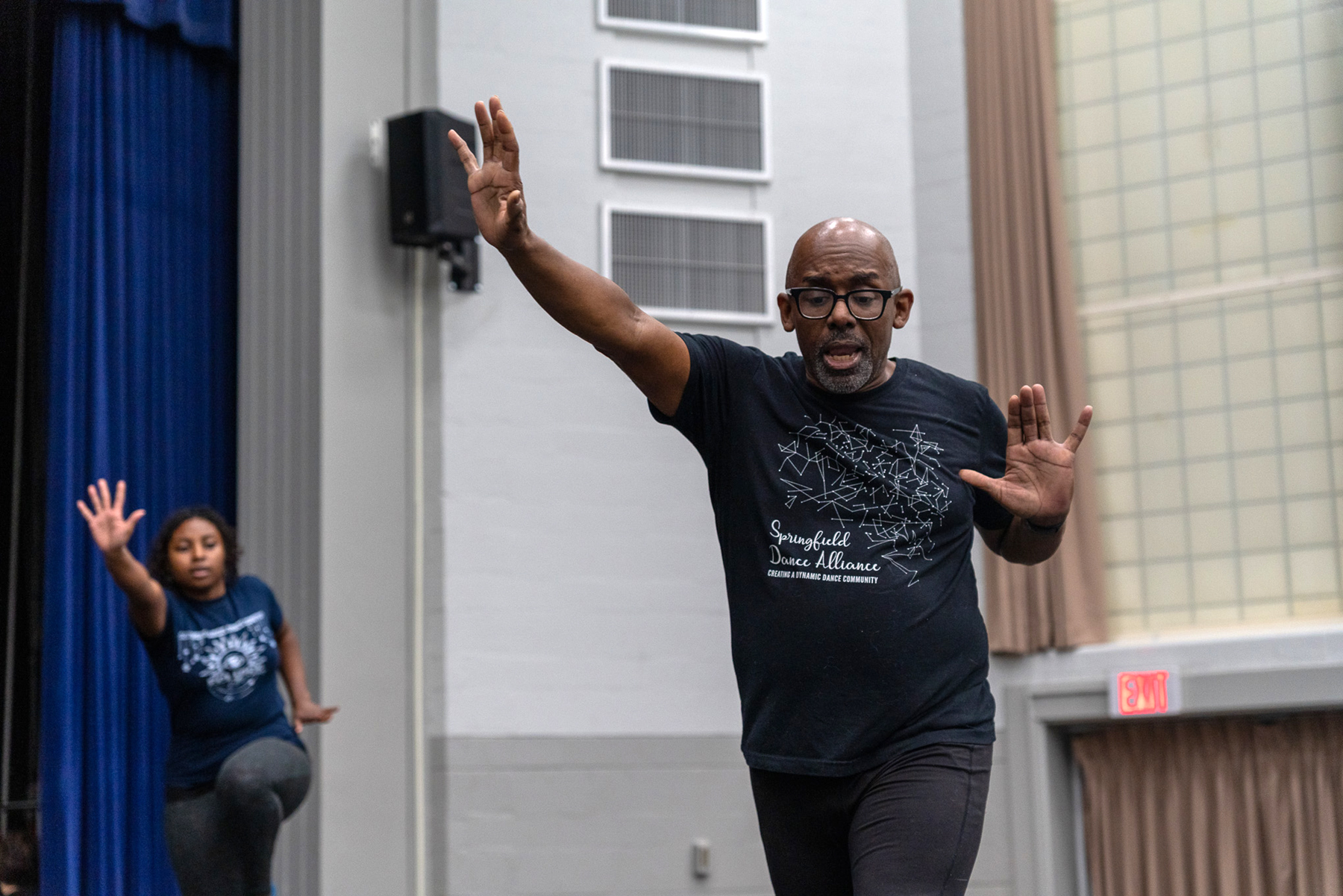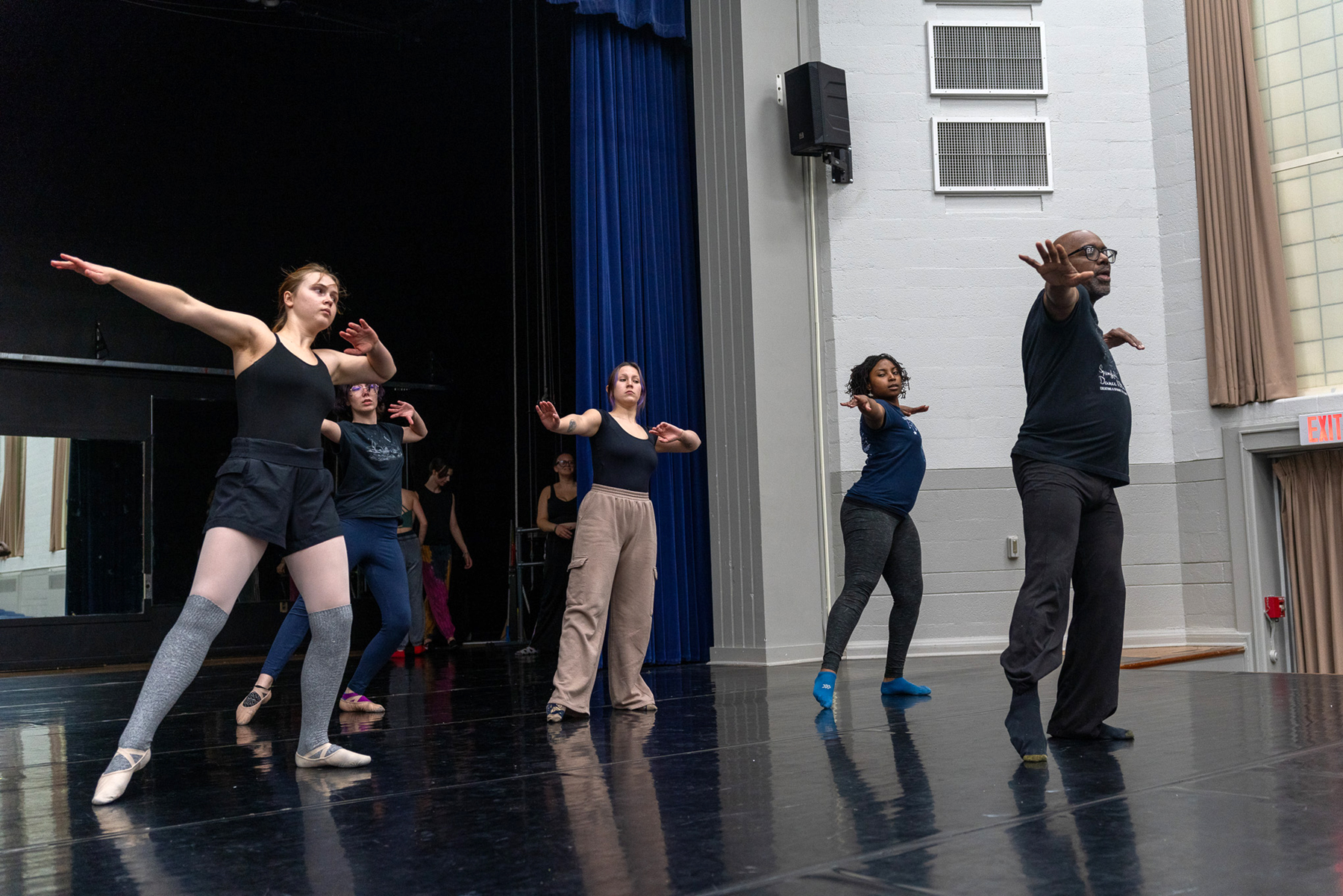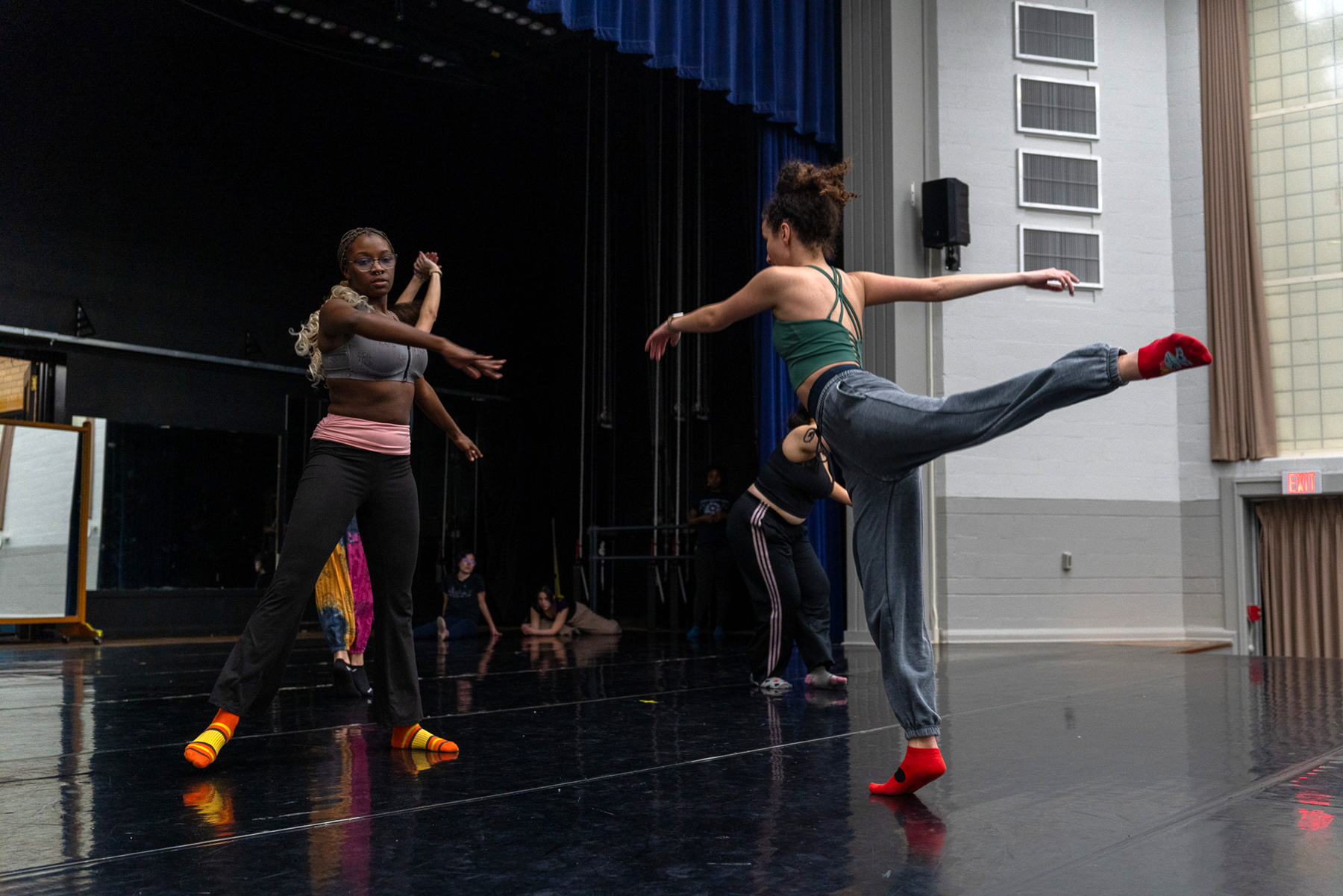Camtastic Newsletter February 2025
/https://siu.edu/search-results.php
Last Updated: Dec 01, 2025, 10:32 AM
Celebrating Beauty: “Phoenix” Dance Concert Inspires Joy, Honors Black Lives Lost
By Molly Parker-Stephens
Assistant Professor, School of Journalism and Advertising
Photos courtesy of Deangelo Handley
At 7 p.m. sharp on a frigid Tuesday in late January, Darryl Clark steps into Furr Auditorium, quickly shedding his gloves and coat after a brisk bike ride across town. The room's mood shifts: the students, chatting and laughing in small groups, quiet and settle into their places. Clark's arrival signals it is time to focus.
He kicks off his shoes and steps onto the stage with purpose. Even the warm-up stretches have a certain grace to them—Clark and the students move in a smooth, flowing rhythm, breathing life into their arms, legs, torso, toes and fingers.
Tonight, he and eight students are rehearsing “New Day,” the final set for their upcoming performance, “Phoenix,” a dance concert happening Feb. 14–16, 2025, at McLeod Theater. Performances take place at 7:30 p.m. on Friday, Feb. 14, and Saturday, Feb. 15, with a 2 p.m. matinee on Sunday, Feb. 16.
The performance, choreographed and directed by Clark, an associate professor in the School of Theater and Dance, blends modern and tap dance with classical music, featuring students alongside guest dancers and directors. “Phoenix,” the title of both the performance and the opening piece, is a dance on film shot by Greg Wendt and featuring Dominique Atwood-Hamilton. Inspired by the lives of Black people lost to police violence, it does not recount the tragedies they are most known for but instead celebrates their beauty and humanity.
The inspirations for the other pieces in the performance are as varied as the dances themselves. Every piece is designed to deliver a unique and personal message to the audience, Clark explains. "It’s a repertoire concert—a mix of pieces for people to enjoy and interpret in their own way."
The program concludes with “New Day,” an uplifting work that inspires joy and conveys a message of perseverance. On this Tuesday night, students are rehearsing this piece under Clark’s guidance.
Clark moves through the choreography slowly, demonstrating each step for his students.
"Yep, up-bap. Spin again. Up, down," Clark calls out, his voice a mix of authority and encouragement. "Turn, turn. Land. Boom."
A student tries it out.
"Then your leg, single turn. Stop," Clark says when they falter. "Try again."
The next attempt lands the moves. "There it is," Clark says, his voice lifting with delight.
By nearly 9 p.m., the transformation over the past two hours is striking. When they began, the dancers moved in chaos—arms and legs flailing, missing cues and running offstage in the wrong direction. But by the time they run through the piece set to Music for 18 Musicians by Steve Reich, the dance begins to come together. Even in casual warm-up clothes, they paint the stage into a work of art. 
The Making of “Phoenix”
Clark's career spans three decades as a dancer, actor, choreographer, director and teacher. His artistry is multifaceted, from performing with “Sesame Street Live!” and Princess Cruises to roles like Jacob in “La Cage aux Folles” and Caliban in “The Tempest.” His choreography has graced everything from Broadway-style productions to benefit shows for the Mike Ditka Foundation. Clark has directed numerous productions, including “The It Girl” and “Nijinsky's Last Dance.” Since joining the faculty of SIU in 2016, he has also directed “The Musical of Musicals,” “Ride the Cyclone,” “The Black Paradox,” and “Dragons Love Tacos”.
As Clark describes it, “Phoenix” is a passion project—part tribute, part beacon, a way of shining joy into a world that often tries to dim it.
Clark traces the origins of the “Phoenix” piece to a conversation in 2021 with a School of Music colleague, Dr. Rossana Cauti, instructor of viola, who asked Clark to choreograph a dance to a piece of music she was working on. "I had just had hip surgery a few months before, so I said, 'No, I don't dance like that anymore,'" recalls Clark.
But the idea lingered. The country was still reeling from the pandemic's aftershocks, while nationwide Black Lives Matter protests continued in the wake of George Floyd's death and the many others lost to police violence. Clark found himself reflecting deeply. In reading about Elijah McClain, who died in Colorado in late 2019 from excessive use of police force, Clark learned he had been a violinist. This revelation sparked a deep sense of connection in Clark. Amid the frustration and sense of hopelessness, he realized that his way of giving back—his way of responding—was through his dance.
The result is “Phoenix,” the opening dance on film that reflects the lives of McClain, Floyd, Sandra Bland, Breonna Taylor, Sonya Massey and others.
"I wanted to evoke their spirit, whatever joy, whatever beauty they brought to this world—that's what I want to show," Clark says. 
A New Era of Dance
According to Clark, “Phoenix” will mark the first time SIU Carbondale has hosted a dance concert in McLeod Theater. It is also the first performance on campus in more than five years entirely dedicated to dance, according to Clark.
The concert will feature 16 student dancers, two SIU BFA in Musical Theatre alums — Joshua Kimball and Jakob Sommers — and three community performers — Cary Laake and Kamea Rhine, in addition to Atwood-Hamilton. It will also showcase professional dancers, including Kennedy Hayes from St. Louis and from Chicago, Winifred Haun and Dancers members Eona Carey and Dillon Zamora. Guest choreographers will include Laurie Goux from West Virginia Wesleyan College and Julia Schaeffer, assistant director of Winifred Haun and Dancers. 
Student performers say that working with Clark on a concert has been transformative. Van Leonard, a junior in the musical theater program from Nashville, Tennessee, recalls meeting Clark during his campus visit. "He sold me on the program," Leonard says. Leonard didn't have formal training before enrolling at SIU, but he says, "Darryl told me about how this program takes you from where you're at and tries to get you to meet the goals you have for yourself."
Leonard says that what Clark and other professors have taught him has exceeded his expectations. "I had goals for myself coming in here, and I've met a lot of them. They're pushing me past those goals," he says. Leonard hopes audiences enjoy the beauty and variety of the program. "Even if they don't get the story of each individual number, or a single number, there's still community in art, and there's beauty in supporting that," he says.
As rehearsal winds down, Clark sits back in a theater seat, putting his warm layers back on while reflecting on the night with his students. “New Day” closes the performance on a hopeful note. "One of the things that people like me do is get worried and scared," he says. 
But creating the performance—coming into the studio, making movement, working with costume design and lighting—is a source of joy for Clark, an outlet to recenter himself. Outside the theater doors, the world remains far from perfect, and Black people continue to bear the brunt of many systemic injustices. But inside, Clark has found joy.
It's this message—finding happiness, even as others try to take it—that he hopes to leave with the audience as the performance closes out with “New Day.”
"To be happy also is to resist," he says.